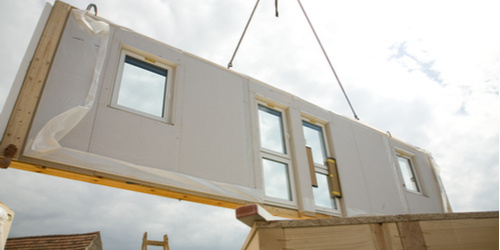Innovation in Construction Technology That Will Shape the Industry in 2019
While construction is strong and vibrant, we do face some complex and increasingly precarious issues in 2019. The skilled labor shortage, stagnant productivity, and safety have plagued the industry for years, and it’s becoming more and more challenging to stay ahead of these dynamics. In the face of this uncertainty, some companies and universities are coming up with innovative ways to combat these problems and put our valued trade contractors on top.

Table of Contents
Advancements in 3D Printing
This past year many universities have discovered different cement and concrete printing techniques. Both Purdue University and Nanyang Technology University in Singapore developed revolutionary methods in 3D printing. Nanyang Technology University developed the technology responsible for synchronized 3D concrete printing. This technology can help fabricate larger pieces using smaller machines, and could easily be done on site. Purdue University discovered a way to print stronger concrete structures using a specific pattern. This can increase the strength of foundations, infrastructure, and other areas. These two technologies coming together not only create stronger buildings, but it helps mitigate the issues from the skilled labor shortage.
This and similar technology is already being put into practice, in Eindhoven, Netherlands. Due to a shortage of bricklayers, the city invested in 3D printing homes. By 3D printing homes, it is able to reduce the cost of construction as well as reduce waste. The beauty of this method is that they are able to print on the build site and can prefabricate many of the necessary finishing components.
Construction Robotics
Construction robotics is a growing field, from the inclusion of drones on construction sites to machines that can lay the foundation for homes and other buildings. But these companies aren’t interested in replacing field workers, rather augmenting our workers. Many of the robots debuted this year assist workers by reducing carrying weights or repetitive motion, and by generally making the site safer.
Robots such as Boston Dynamics’ video of Spot autonomously surveying a construction site looks more science fiction than science fact, but its advancements can help with site surveying and documentation. While Construction Robotics’ MULE currently assists workers in lifting materials up to 135 pounds. The goal is to reduce fatigue and injuries from lifting which could improve productivity. And this would be a positive step in enhancing worker safety.

Semi-Autonomous Construction Vehicles
With all of the emphasis in the media on autonomous street vehicles, the progress of autonomous and semi-autonomous construction vehicles has been largely missed. While the primary use of these vehicles is in mining, the implications for construction are endless. The benefit of semi-autonomous or autonomous dozers and similar vehicles is the efficiency with which they perform tasks. Software is sometimes better at calculating the most efficient route and plan than humans. In addition, semi or fully autonomous vehicles can reduce the strain companies feel from the skilled labor shortage.

Setting the Stage for Design for Manufactured Assembly and Integrated Labor Delivery
These technology innovations are critical as the construction industry moves toward designing for manufactured assembly. Processes will be streamlined and wastes will be reduced to improve project delivery. Undoubtedly, as we experience the industrialization of construction, trade workers will need to acquire new skills to work with these new technologies. These innovations continue to validate their importance in the project life-cycle. It’s the expertise of the skilled trades that is crucial to ensuring constructability, delivering labor with prefabricated assemblies built offsite, and managing the installation. While manual labor in the field may decline with off-site manufacturing of assemblies, the trades provide more than manual labor. They provide the skills, knowledge, and experience to increase productivity in ways that benefit every project — delivering better buildings faster.
